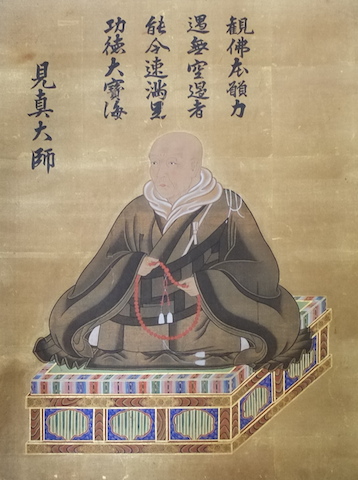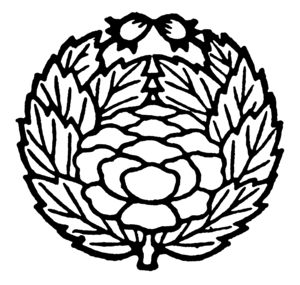 Shinran Shonin, born in the outskirts of Kyoto in 1173, was an eminent Buddhist figure of the Kamakura period (1192-1333), a period regarded as the golden age of Japanese Buddhism. A number of outstanding Buddhist figures appeared during this time, and it is on the basis of their teachings that most of the schools of Japanese Buddhism are founded.
Shinran Shonin, born in the outskirts of Kyoto in 1173, was an eminent Buddhist figure of the Kamakura period (1192-1333), a period regarded as the golden age of Japanese Buddhism. A number of outstanding Buddhist figures appeared during this time, and it is on the basis of their teachings that most of the schools of Japanese Buddhism are founded.
Shinran received his ordination at the age of nine. This was followed by twenty years of traditional Buddhist training and instruction at the Tendai monastery on Mt. Hiei, one of the major centers of Buddhist learning at that time.
In 1201, at the age of twenty-nine, the course of Shinran’s life changed as a result of his encounter with the great master, Honen Shonin (1133-1212). Honen was teaching the Nembutsu (the Recitation of the Name of Amida Buddha), a simple practice which all could perform, but which also had deep roots in the Buddhist religious tradition. The immense popularity of this teaching drew the sharp disapproval of other contending sects, and in 1207, the government issued a proclamation banning the teaching of Nembutsu. Honen was exiled to Tosa (in Shikoku) and Shinran to Echigo (present Niigata prefecture). Teacher and disciple were never to meet again.
Although Shinran was pardoned in 1211, he did not return to Kyoto. He elected to be “neither monk nor layman,” and lived among the common people. With his family, he moved to Hitachi (present Ibaraki prefecture) where he was to spend the next twenty years of his life. During this time, he propagated the teaching of Nembutsu.
He returned to Kyoto at the age of sixty. During the last thirty years of his life, he completed the writing of many religious tracts and verses. His most important work is the Kyogyoshinsho (A Collection of Passages Expounding the Teaching, Practice, Faith. and Attainment of Pure Land Buddhism), which is the foundation of Shin Buddhist doctrine.
On November 28,1262, Shinran passed away at the age of ninety, bringing to a close the life of one of the most remarkable figures in Japanese Buddhist history.

